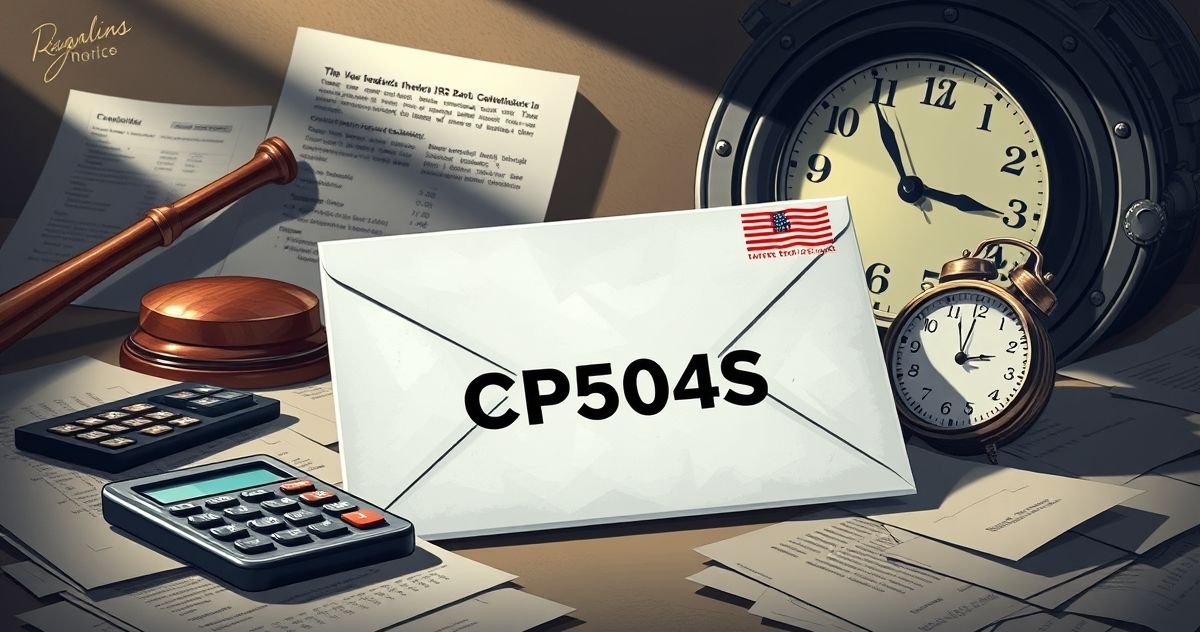What is the CP504S Notice?
The CP504S Notice is issued by the Internal Revenue Service (IRS) to alert taxpayers of unpaid taxes that are significantly overdue. It serves as a final warning before more stringent collection actions, such as federal tax liens or levies, are initiated. This notice underscores the urgency of settling tax debts and adhering to compliance requirements to avoid severe financial repercussions.
Primary Purpose
The primary purpose of the CP504S Notice is to inform taxpayers about outstanding tax debts and prompt them to arrange payment. This notice is typically issued when previous reminders or notifications have been ignored or unresolved. The IRS uses the CP504S as a critical tool to recoup owed taxes and ensure taxpayers acknowledge their impending obligations to avoid enforced collection measures.
Key Features or Components
- Notification of Debt: The notice explicitly details the amount overdue, including accrued penalties and interest. It provides a clear indication of the taxpayer’s debt status.
- Request for Immediate Action: This document acts as a formal request for payment, urging taxpayers to address their existing liabilities promptly to avert further actions.
- Explanation of Consequences: The CP504S delineates potential repercussions for inaction, which may include tax liens on property, wage garnishments, or bank account levies.
- Payment Options: The notice often includes information on payment plans or installment agreements to aid taxpayers in fulfilling their fiscal responsibilities affordably.
Filing or Compliance Requirements
Receiving a CP504S Notice signifies the necessity for immediate taxpayer action to comply with IRS regulations. Taxpayers should heed the instructions in the notice to prevent further collection actions. Compliance involves either paying the due balance in full or negotiating a payment arrangement with the IRS. While payment in full is preferable, the IRS does offer installment plans for those unable to clear the balance outright, subject to eligibility conditions.
Penalties or Consequences for Non-Compliance
The consequences of ignoring a CP504S are significant and can adversely impact a taxpayer’s financial status. Potential penalties include:
- Federal Tax Lien: A lien may be placed on a taxpayer’s property, affecting their credit rating and ability to secure financing.
- Levies: The IRS may levy (seize) assets, including bank accounts or wages, to satisfy the tax debt.
- Interest and Penalties Accrual: Continued non-payment leads to further accumulation of interest and penalties, compounding the original debt.
Importance in Tax Resolution
The CP504S Notice is integral in tax resolution as it serves both as an alert of significant tax vulnerabilities and a pivotal point for negotiation or payment resolution with the IRS. This notice offers the taxpayer a critical opportunity to rectify their tax situation before severe collection actions commence. Engaging promptly and constructively with the IRS can lead to amicable solutions like installment agreements, offering in compromise, or negotiation of lien withdrawal.
Taxpayers are advised to consult tax professionals or legal advisors when dealing with a CP504S Notice. These experts can provide guidance, assist in communication with the IRS, and help devise strategies to satisfy tax obligations effectively without incurring additional penalties.
In conclusion, the CP504S Notice marks a decisive juncture in the tax compliance life cycle, highlighting the necessity for immediate and decisive action. By addressing the notice timely and strategically, taxpayers can mitigate risks, ensure compliance, and preserve financial health.



